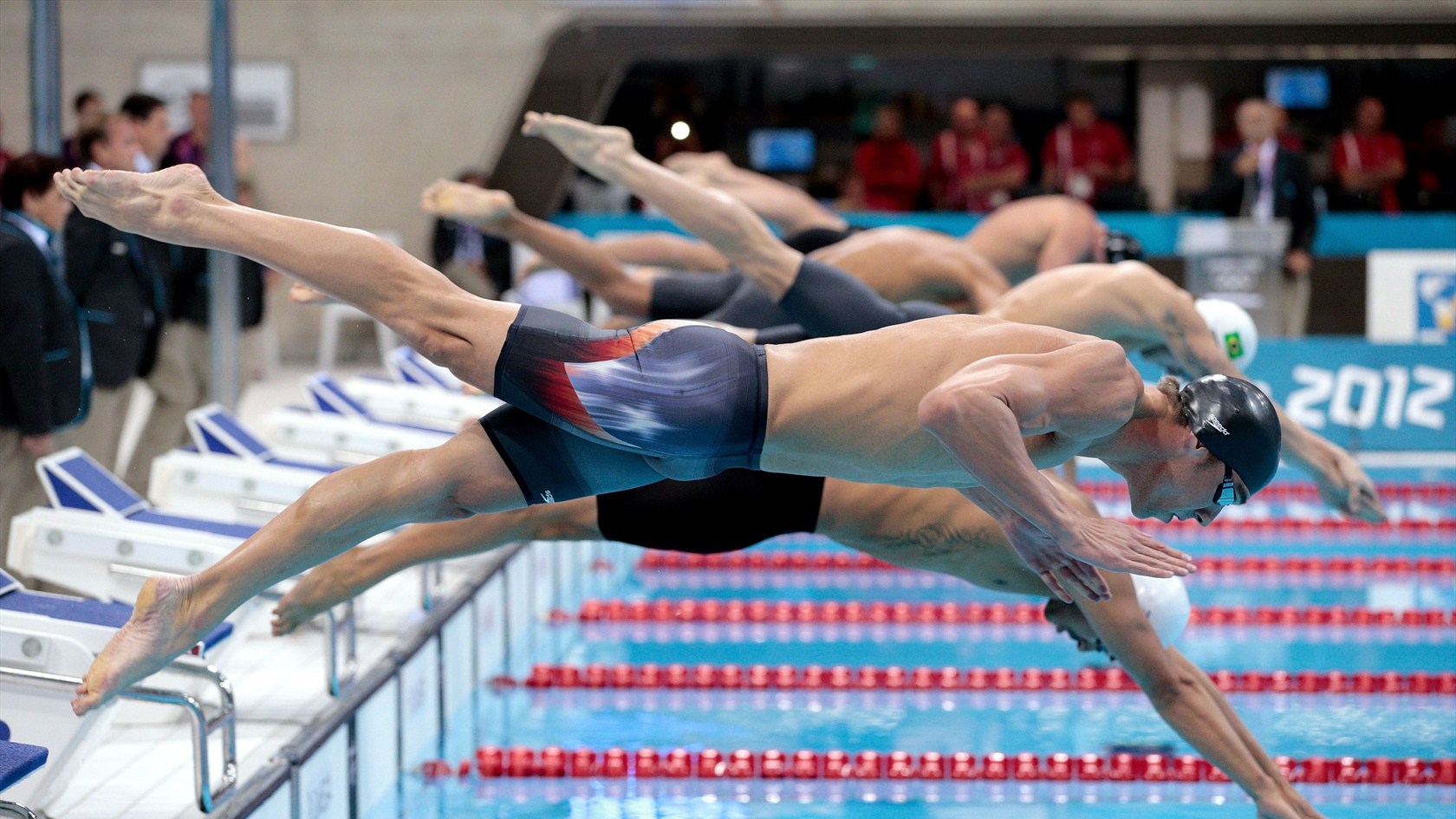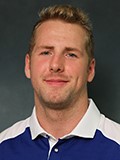The 50 Freestyle is one of the most anticipated races in competition. It is the truest test of speed and puts a microscope on swimmers skills. A slight hesitation on a start, a poor turn or an extra breath can be the difference between gold and mediocrity. Although this is obvious it is unbelievable how many swimmers and coaches still believe a 50 Freestyle is something you can’t really coach. I have heard coaches state, “It’s just a 50, go bash it out and try not to breathe too much”. As a former sprinter, this annoys me to no end.
If you look at some of the truly great sprinters. They are over 6 foot, they are big and powerful but they are also technically very good swimmers. Anthony Ervin is a fantastic example of this. The Rio Olympic Champion was up against some huge powerful swimmers but stuck to his flawless technique. This led him to ultimately beat the field when it mattered and at 36 years old no less.
How to calculate your start:
Training for a 50 freestyle exclusively is almost never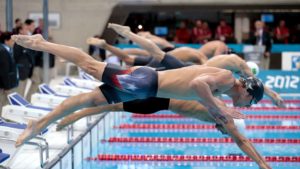 the case, you will usually swim other events including 100 and 200’s of freestyle but within the training, there should be some 50 specific work. Starts are important for all races but for a 50 working in different length sprints and timing, each of them can be a great advantage.
the case, you will usually swim other events including 100 and 200’s of freestyle but within the training, there should be some 50 specific work. Starts are important for all races but for a 50 working in different length sprints and timing, each of them can be a great advantage.
Within a start, there are many different options. How many underwater kicks is the main area I believe should be worked on. Timing splits to 10 and 15 yards with varying kick choices giving the athlete adequate rest between each can tell you how many kicks is optimal for each swimmer. A practice may look like this:
Sufficient warm up
3 x 10 yards with 4 underwater kicks
3 x 10 yards with 3 underwater kicks
3×15 yards with 4 underwater kicks
3 x 15 yards with 3 underwater kicks
This is a highly unique area as some swimmers will kick to 15 yards optimally and others it can be two kicks and up into their stroke for the best result, once you know the type of dive and number of kicks it should be practised and practised. It should be possible for the swimmer to complete the start, underwater phase, break-out and first few strokes with their eyes closed.
Where swimmers fail is they change their start in every practice. Then when they get to their races they are still unsure as to how to perform their optimal start. Throughout the season you can revisit this protocol. You can Adapt their starts but until this is done, it should remain the same.
Breathing in a 50 freestyle :
Many swimmers through their season of training get reliant on breathing patterns. The most common is a swimmer breathing 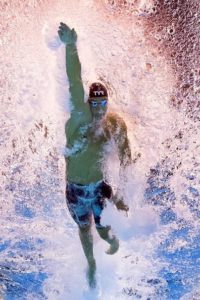 every stroke but any breathing pattern can become an issue in a 50 freestyle. To get the best hand speed possible breathing should be limited. Yet rotation within the stroke should still be complete. This is where swimmers who rely on a breathing pattern to get that rotation struggle.
every stroke but any breathing pattern can become an issue in a 50 freestyle. To get the best hand speed possible breathing should be limited. Yet rotation within the stroke should still be complete. This is where swimmers who rely on a breathing pattern to get that rotation struggle.
Longer distance training for sprinters should include a lot of odd pattern breathing so their rotation stays even when breathing becomes limited. 200’s using a 3,5,7,3 or 3,5,7,9 by 50 breathing pattern is a way to include this. On top of this, there should be a lot of sprinting performed with limited breathing.
What worked for us
Last season our team adopted 50’s with no breathing on lap 1. We also did 75’s with only 3 breathes per lap while sprinting and it worked excellently. Our sprinters firstly realized they did not need nearly as many breathes as they thought. Also that the oxygen debt they incurred did not catch up to them during the race. This is where a 50 becomes so different, in a 100 free limiting breathing too much in the first half will dramatically affect the finish. Although a 50 freestyle can be completed by the right individual optimally with no breathing.
Through my experience one to two breathes is usually optimal. But for most swimmers these breaths should be pre-planned. For example, one breathe at the flags on lap 1. Then one breathe 4 strokes after the breakout. After that second breathe the only thing in the swimmer’s mind should be holding perfect form and swimming through the wall. This can also be practised even in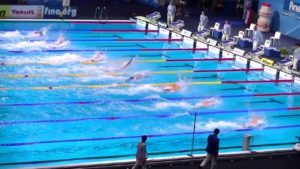 lower level meets by the athlete, if they take one breathe and still feel gassed at the end they need to add in another somewhere. These are just two facets of the 50 but will help a swimmer feel more confident in what they are doing in this race, having a game-plan is key.
lower level meets by the athlete, if they take one breathe and still feel gassed at the end they need to add in another somewhere. These are just two facets of the 50 but will help a swimmer feel more confident in what they are doing in this race, having a game-plan is key.
By Kevin Dickson
